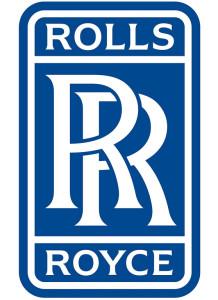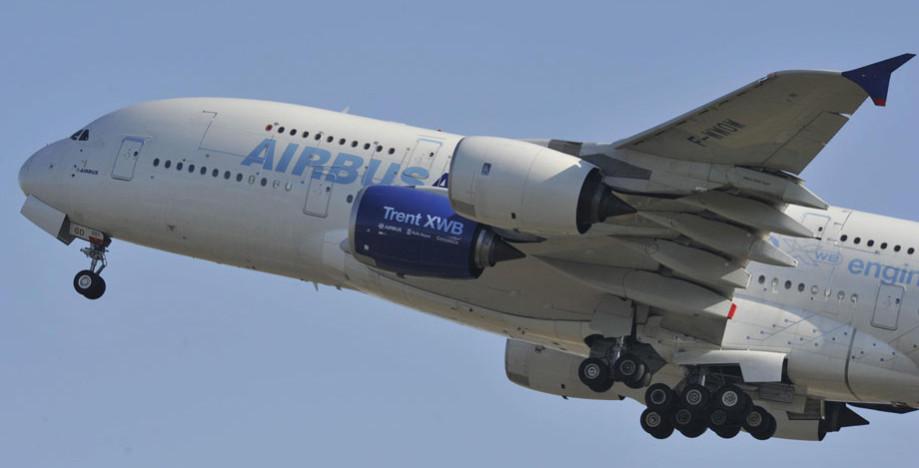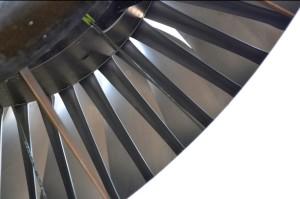 As one of the leading manufacturers of jet engines in the world, Rolls-Royce is one of a handful of industry leaders who have been responsible for more companies adopting 3D printing into their manufacturing process. The company has been building engines for aircraft for more than a century, and this week the company just made history by flying an Airbus passenger airplane using the most powerful jet engine that they have ever made. And the record breaking amount of thrust that their new engine produces was made possible thanks to a set of advanced aerofoils that were 3D printed using cutting-edge additive manufacturing technology.
As one of the leading manufacturers of jet engines in the world, Rolls-Royce is one of a handful of industry leaders who have been responsible for more companies adopting 3D printing into their manufacturing process. The company has been building engines for aircraft for more than a century, and this week the company just made history by flying an Airbus passenger airplane using the most powerful jet engine that they have ever made. And the record breaking amount of thrust that their new engine produces was made possible thanks to a set of advanced aerofoils that were 3D printed using cutting-edge additive manufacturing technology.
The Trent XWB series of turbofan jet engines has widely been regarded as one of the most reliable and efficient civilian jet engines available on the market for nearly a decade. It is also the fastest-selling wide-body jet engine, having sold more than 1,500 engines to more than 40 individual customers. Currently Rolls-Royce exclusively supplies engines for the Airbus A350 XWB (extra wide body) and they have continually been pushing the limits of what the engine can do in order to keep up with new Airbus models by increasing both its power and reliability since the original Trent 1000 was released.
The newest model under development is the Trent XWB-97 which is being designed to power a larger version of the Airbus A350 XWB called the A350-1000, that is expected to enter service in 2017. The XWB-97’s development program was launched two years ago, and this week’s trial run flight was the first successful test of the new engine. The single prototype Trent XWB-97 replaced one of the four Rolls-Royce Trent 900 engines typically installed on a Airbus A350 XWB for its flight out of Airbus headquarters in Toulouse, France. Not only was this an important milestone for the XWB-97, but this test flight was also the first successful test flight of the the world’s largest 3D printed aeroplane engine structure.
“It’s a great day for the whole Trent XWB team and for Rolls-Royce, a moment that the team have been working up to since we finalised the -97 design back in 2012. The Trent XWB was always designed with a higher thrust variant in mind and during the -84 development programme we ran engines up to the -97 conditions to improve our understanding of the design at the higher thrust levels. We then took that experience to help optimise the core around the A350-1000 requirements, adding HP turbine technologies to maintain efficiency and time on wing from full temperatures margins. This means our customers get an engine with greater capability, but without any compromises,” explained Chief Engineer for the Trent XWB-97 Andy Gwynne.
 The previous generation of the Trent XWB engines was the XWB-84, named such because it offers 84,000 lbs of thrust at takeoff, the brand new Trent XWB-97 offers a staggering 97,000 lbf thrust with very little additional power required. Part of that increase in power is thanks to several 3D printed aerofoils within the engine’s front bearing housing. These airfoils are the largest 3D printed parts ever incorporated into a jet engine and were manufactured with a process that was developed by Rolls-Royce and the University of Sheffield.
The previous generation of the Trent XWB engines was the XWB-84, named such because it offers 84,000 lbs of thrust at takeoff, the brand new Trent XWB-97 offers a staggering 97,000 lbf thrust with very little additional power required. Part of that increase in power is thanks to several 3D printed aerofoils within the engine’s front bearing housing. These airfoils are the largest 3D printed parts ever incorporated into a jet engine and were manufactured with a process that was developed by Rolls-Royce and the University of Sheffield.
Rolls-Royce recently invested tens of millions of pounds in their Derby, UK manufacturing facility, making it the primary site for Trent XWB production. Their new 3D printing capabilities offer Rolls-Royce the ability to make the the development and design process of their engines faster and less expensive, but they also offer them the ability to provide more on-site experimentation and prototyping. According to Rolls-Royce, by using the 3D printed components in the Trent XWB-97 the time required to produce the airfoils was reduced by a third.
Subscribe to Our Email Newsletter
Stay up-to-date on all the latest news from the 3D printing industry and receive information and offers from third party vendors.
You May Also Like
John Kawola on BMF’s Formnext Highlights and What’s Next
Boston Micro Fabrication (BMF) has continued to grow steadily since my last visit to its Boston headquarters. The company, known for its ultra-precise 3D printing technology, showcased new product launches,...
Formnext 2024: Sustainability, Large-Format 3D Printers, & More
The doors have closed on Formnext 2024, but we still have more news to bring you about what was introduced on the show floor this year. WASP had several product...
Nano Dimension Builds Momentum After Q3 Earnings: Julien Lederman Talks Strategy
“We’re building a business grounded in innovation but also ensuring financial sustainability for the long term.” That’s how Julien Lederman, Vice President of Corporate Development at Nano Dimension (Nasdaq: NNDM),...
3D Printing Webinar and Event Roundup: December 1, 2024
We’ve got several webinars this first week of December, plus events all around the world, from Chicago, Los Angeles, and Austin, Texas to the UK, Barcelona and beyond. Plus, there...


































